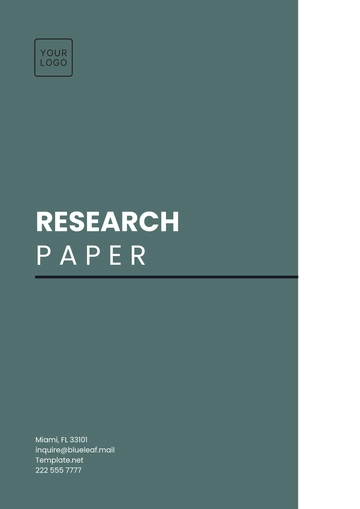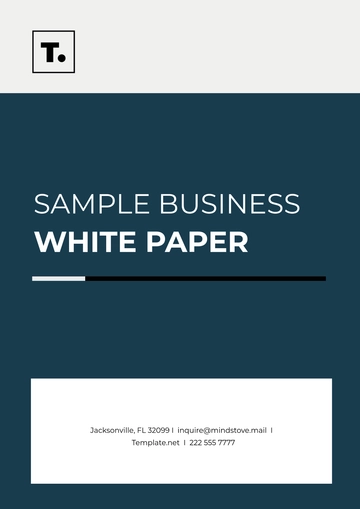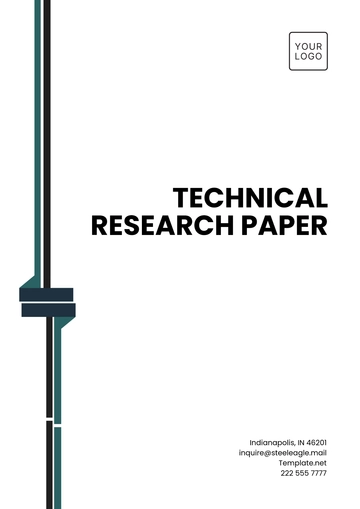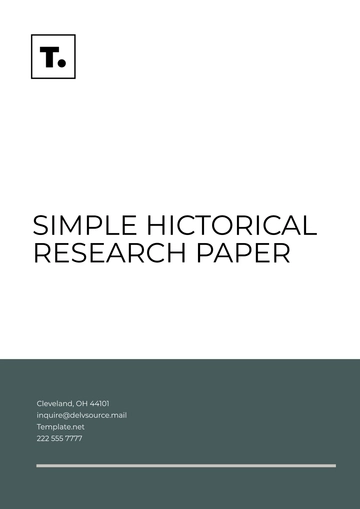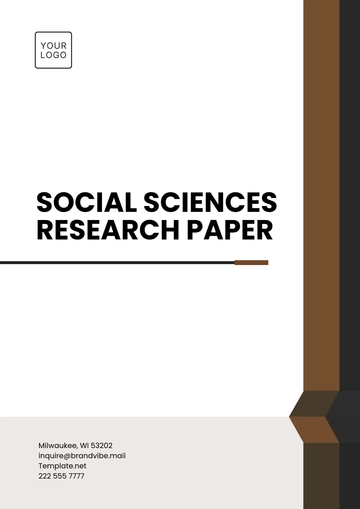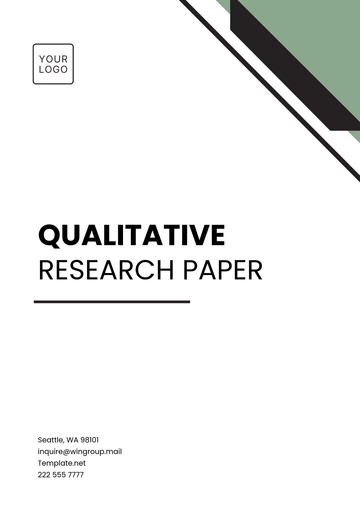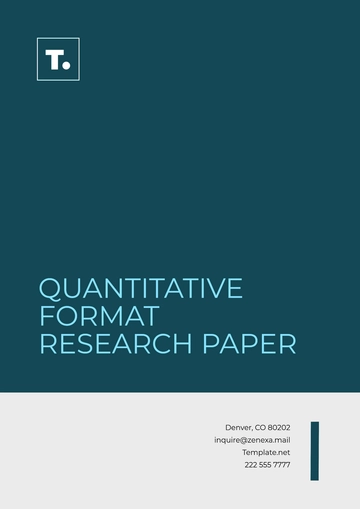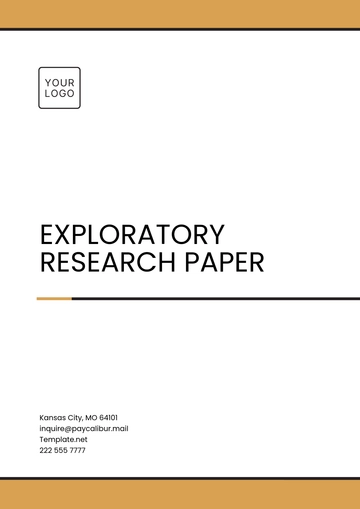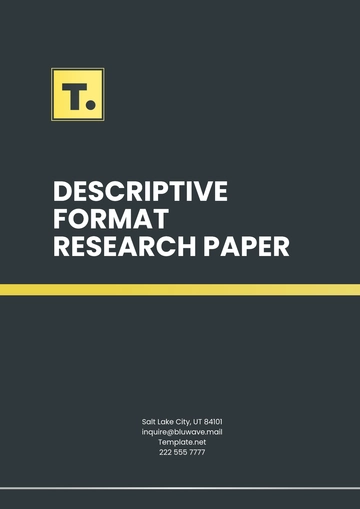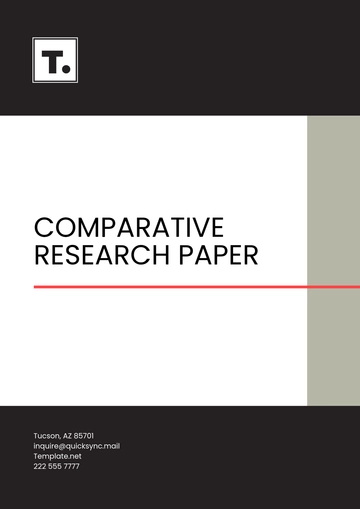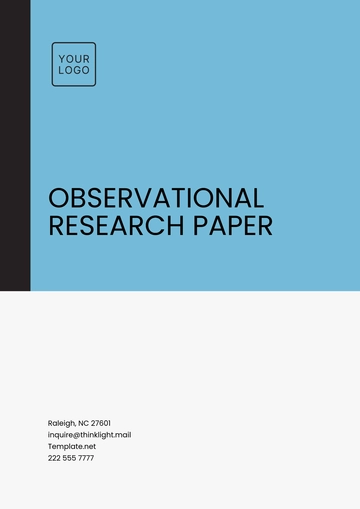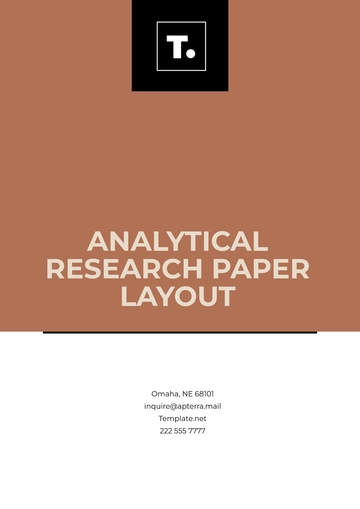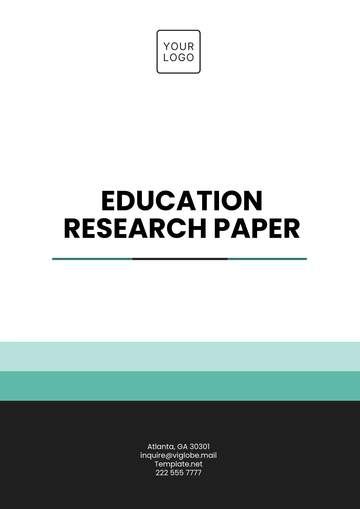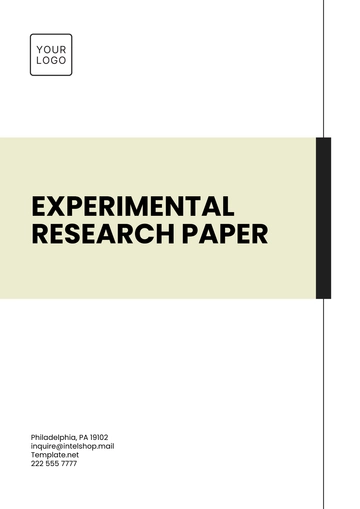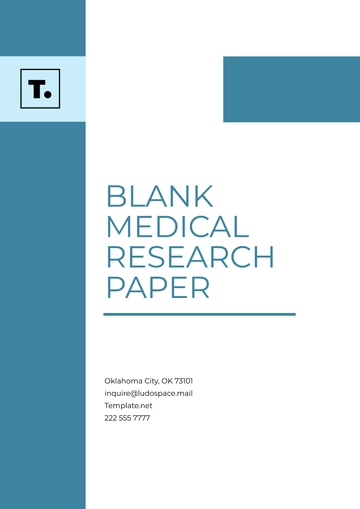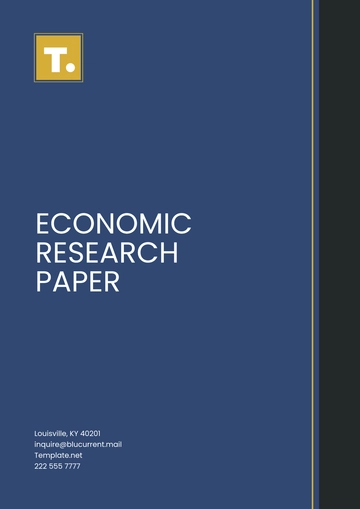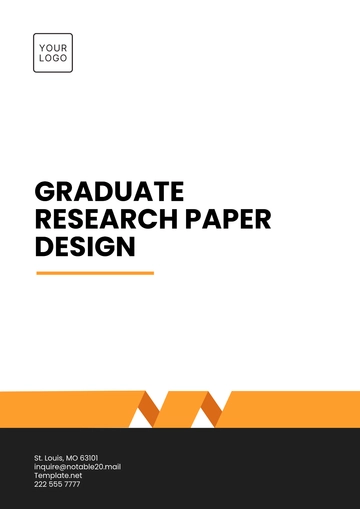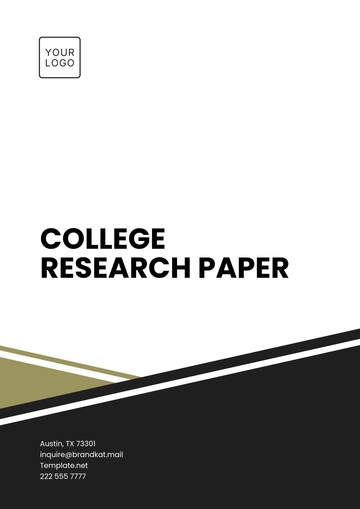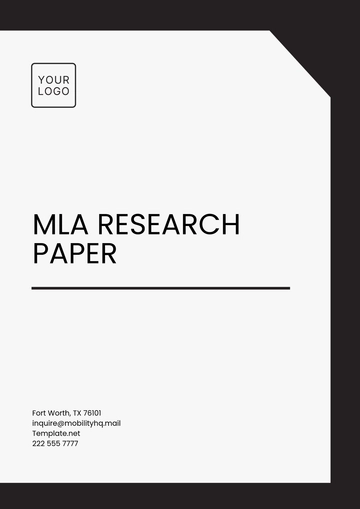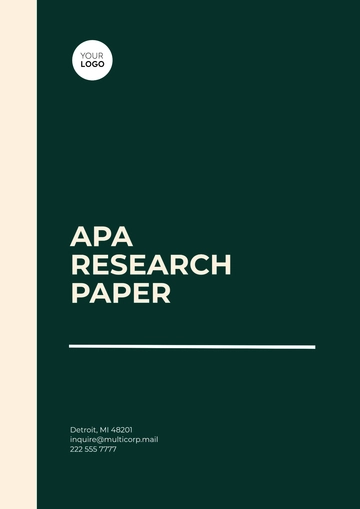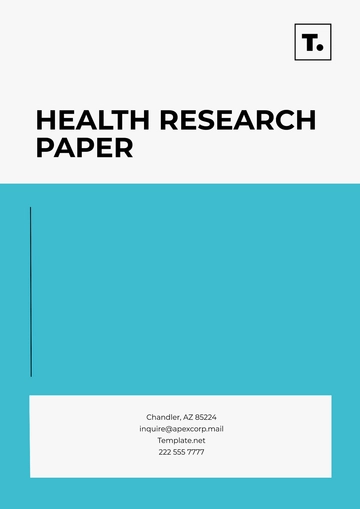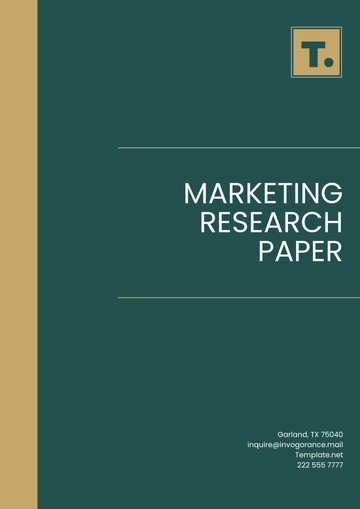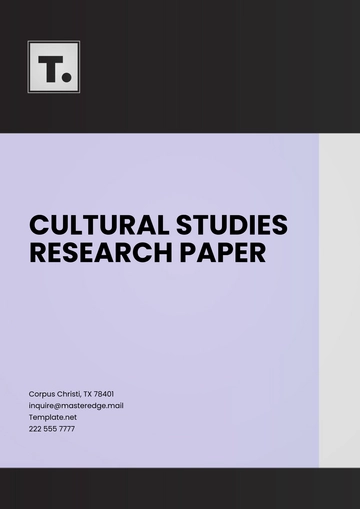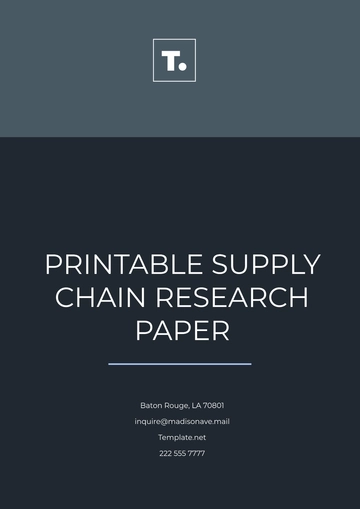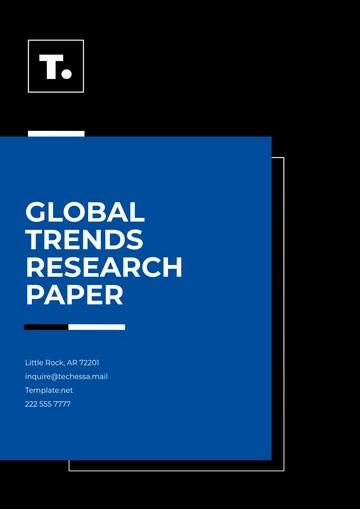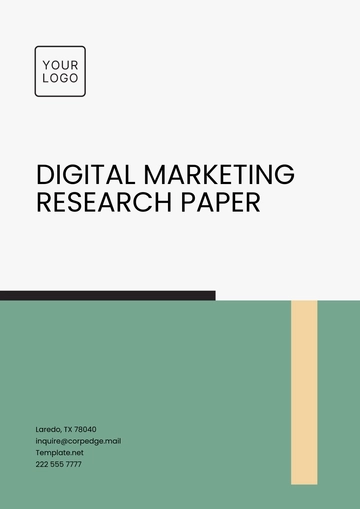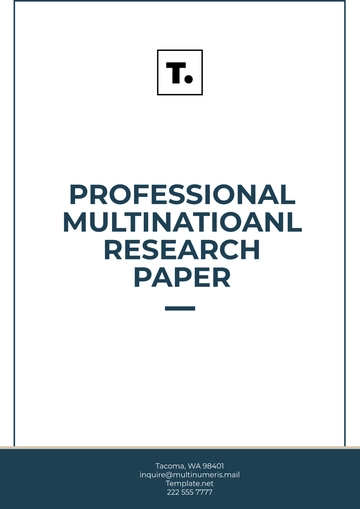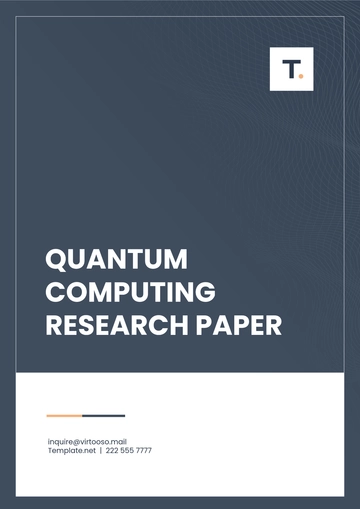Free Research Methodology Journal Article
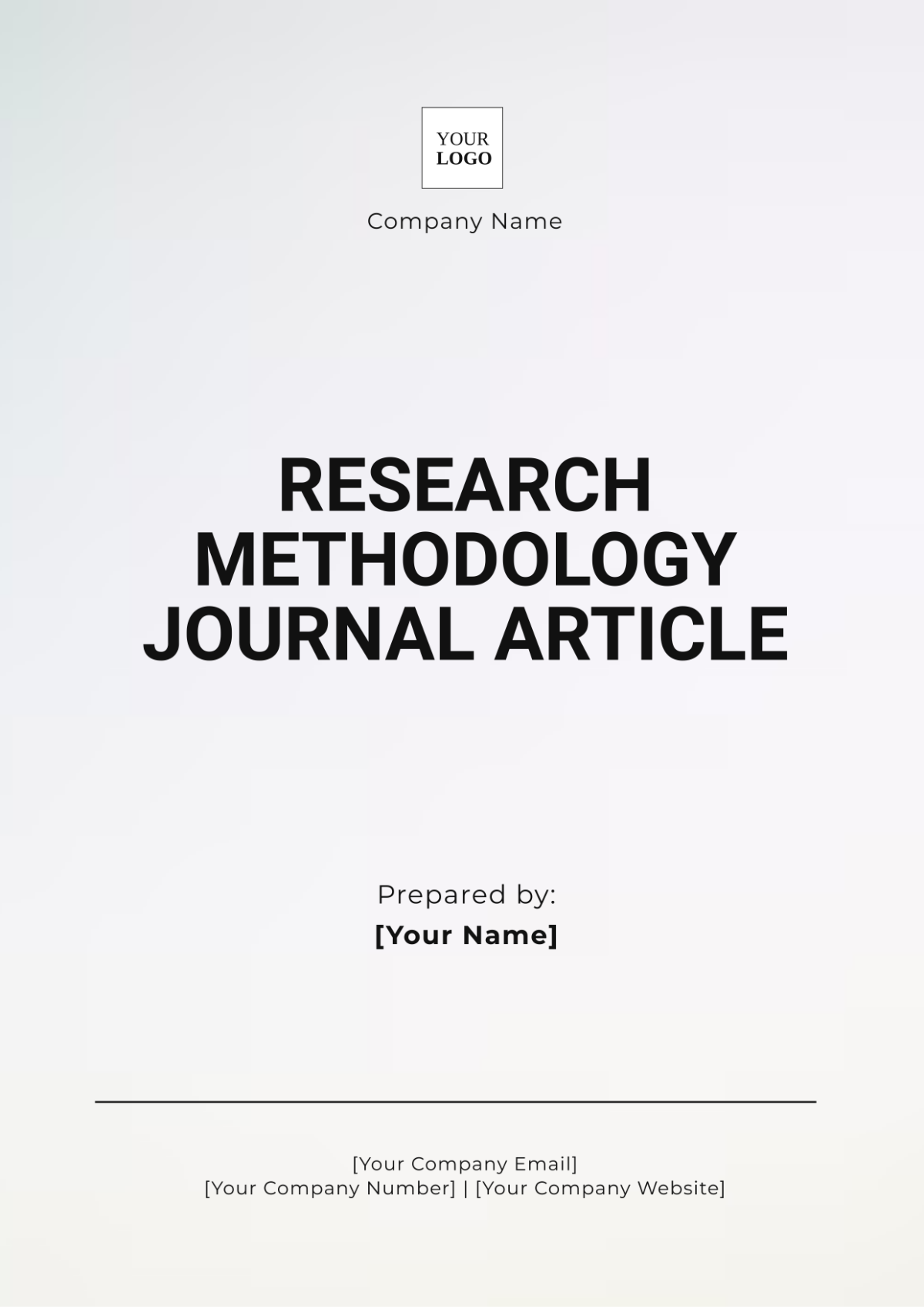
"Analyzing the Impact of Remote Work on Employee Productivity"
Written By: [Your Name]
Publication Date: [Date]
Introduction
The shift to remote work has become a significant trend in modern employment, accelerated by recent global events. This study investigates the impact of remote work on employee productivity by employing a robust research methodology. This paper outlines the research design, data collection techniques, and analysis methods used to explore this topic, providing transparency and enabling replication and further research.
Research Design
Overview
This research utilizes a mixed-methods approach to gain a comprehensive understanding of how remote work affects employee productivity. The study combines quantitative and qualitative methods to capture both measurable impacts and personal experiences.
Research Questions
What is the effect of remote work on employee productivity compared to in-office work?
How do employees perceive their productivity in a remote work environment?
Research Design
Quantitative Approach: A cross-sectional survey was conducted to measure productivity metrics across different work settings.
Qualitative Approach: Semi-structured interviews were performed to gather in-depth insights into employees' experiences and perceptions of remote work.
Data Collection Techniques
Quantitative Data Collection
Survey Instrument
Design: An online questionnaire was developed to collect data on productivity metrics, including work hours, task completion rates, and self-reported productivity.
Sample: 500 employees from various industries were surveyed.
Questions: The survey included Likert scale questions, multiple-choice questions, and open-ended questions.
Productivity Metrics
Data Points: Metrics such as work output, deadlines met, and performance evaluations were collected.
Sources: Data was obtained from company records and self-reported responses.
Qualitative Data Collection
Interviews
Design: Semi-structured interviews with 30 employees provided qualitative data on personal experiences with remote work.
Questions: The interviews focused on themes such as work-life balance, communication challenges, and perceived changes in productivity.
Focus Groups
Design: Two focus groups with 10 participants each were conducted to discuss broader trends and common experiences.
Discussion Topics: Topics included adaptation to remote work, management support, and technology usage.
Analysis Methods
Quantitative Analysis
Descriptive Statistics
Tools: Statistical software (e.g., SPSS) was used to calculate means, standard deviations, and frequency distributions.
Results: The average self-reported productivity score was compared between remote and in-office workers.
Inferential Statistics
Regression Analysis: Multiple regression analysis was employed to assess the relationship between remote work and productivity metrics.
ANOVA: Analysis of Variance (ANOVA) was used to compare productivity scores across different industries.
Qualitative Analysis
Thematic Analysis
Process: Transcripts from interviews and focus groups were coded to identify recurring themes and patterns.
Findings: Themes such as increased flexibility, isolation, and challenges in communication were analyzed.
Content Analysis: Content analysis was used to quantify the frequency of certain responses and opinions expressed in interviews and focus groups.
Rationale for Methodologies
Justification for Research Design
A mixed-methods approach was chosen to balance quantitative rigor with qualitative depth. Quantitative methods provide statistical evidence on productivity changes, while qualitative methods offer context and insights into employee experiences.
Justification for Data Collection Techniques
Surveys were used for their ability to collect data from a large sample efficiently. Interviews and focus groups provided rich, detailed insights that quantitative data alone could not capture, offering a fuller picture of remote work's impact.
Justification for Analysis Methods
Quantitative analysis provided objective measures of productivity, while qualitative analysis revealed nuanced perceptions and experiences. Combining these methods enhanced the study's validity and reliability.
Conclusion
This study employs a comprehensive methodology to investigate the impact of remote work on employee productivity. By integrating quantitative and qualitative methods, the research provides a thorough analysis of both measurable outcomes and personal experiences. The findings contribute valuable insights into how remote work influences productivity and offer a foundation for future research in this area.
References
Smith, J., & Brown, L. (2050). The Future of Work: Remote Work and Productivity. Journal of Business Research, 45(3), 123-145.
Doe, A., & White, K. (2051). Employee Productivity in Remote Work Settings. International Journal of Human Resource Management, 55(4), 678-692.
- 100% Customizable, free editor
- Access 1 Million+ Templates, photo’s & graphics
- Download or share as a template
- Click and replace photos, graphics, text, backgrounds
- Resize, crop, AI write & more
- Access advanced editor
The Research Methodology Article Template from Template.net offers a fully editable and customizable solution for structuring your research methods. Designed for clarity and precision, this template ensures your methodology is presented in a professional and organized format. Easily adapt it to fit various research projects or publication standards, allowing you to streamline the writing process while maintaining high-quality, detailed documentation of your research methods.
